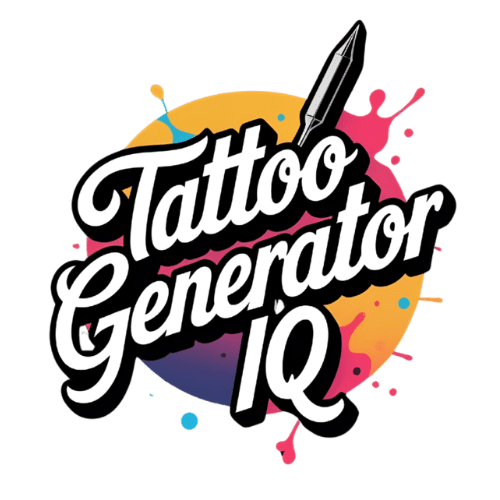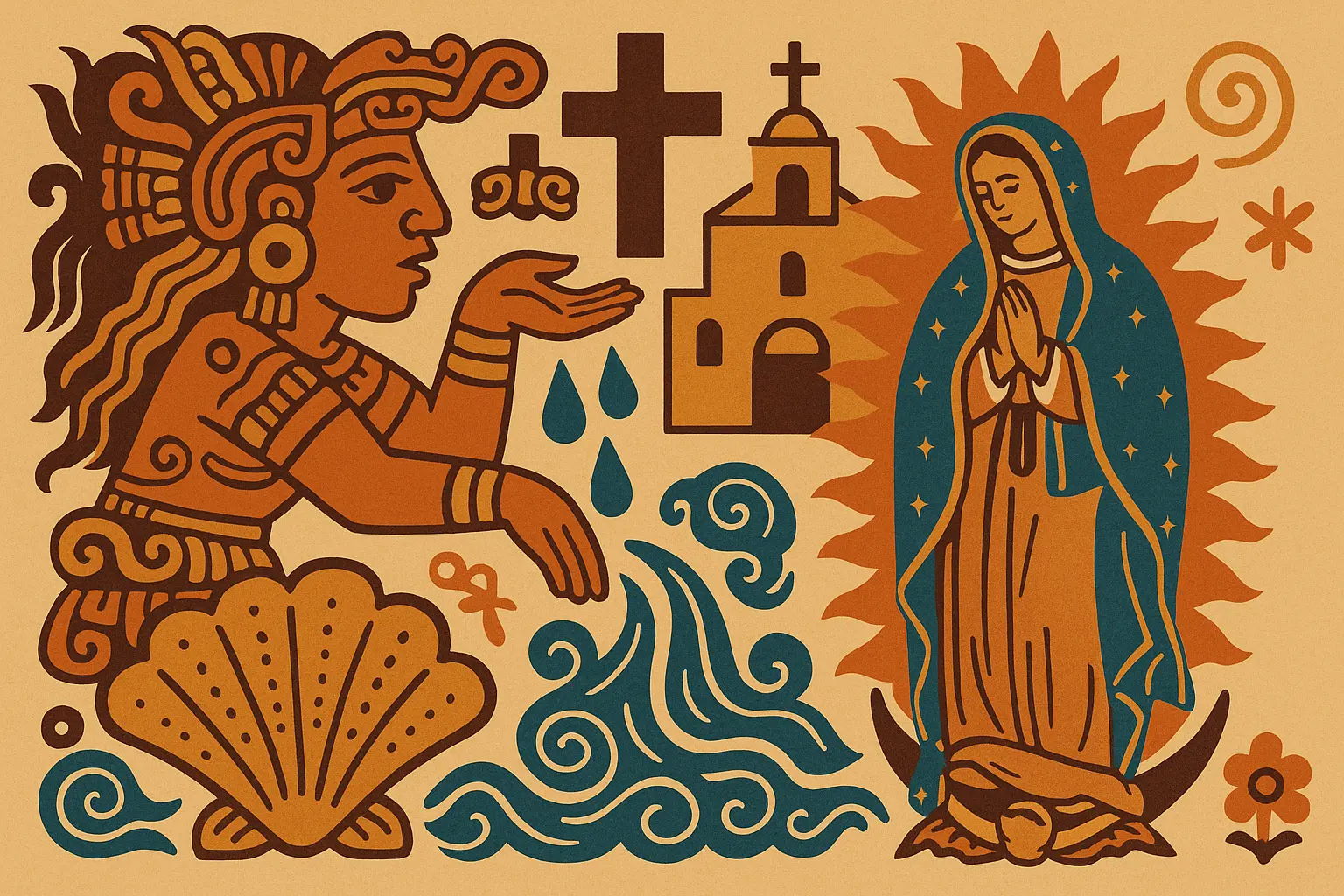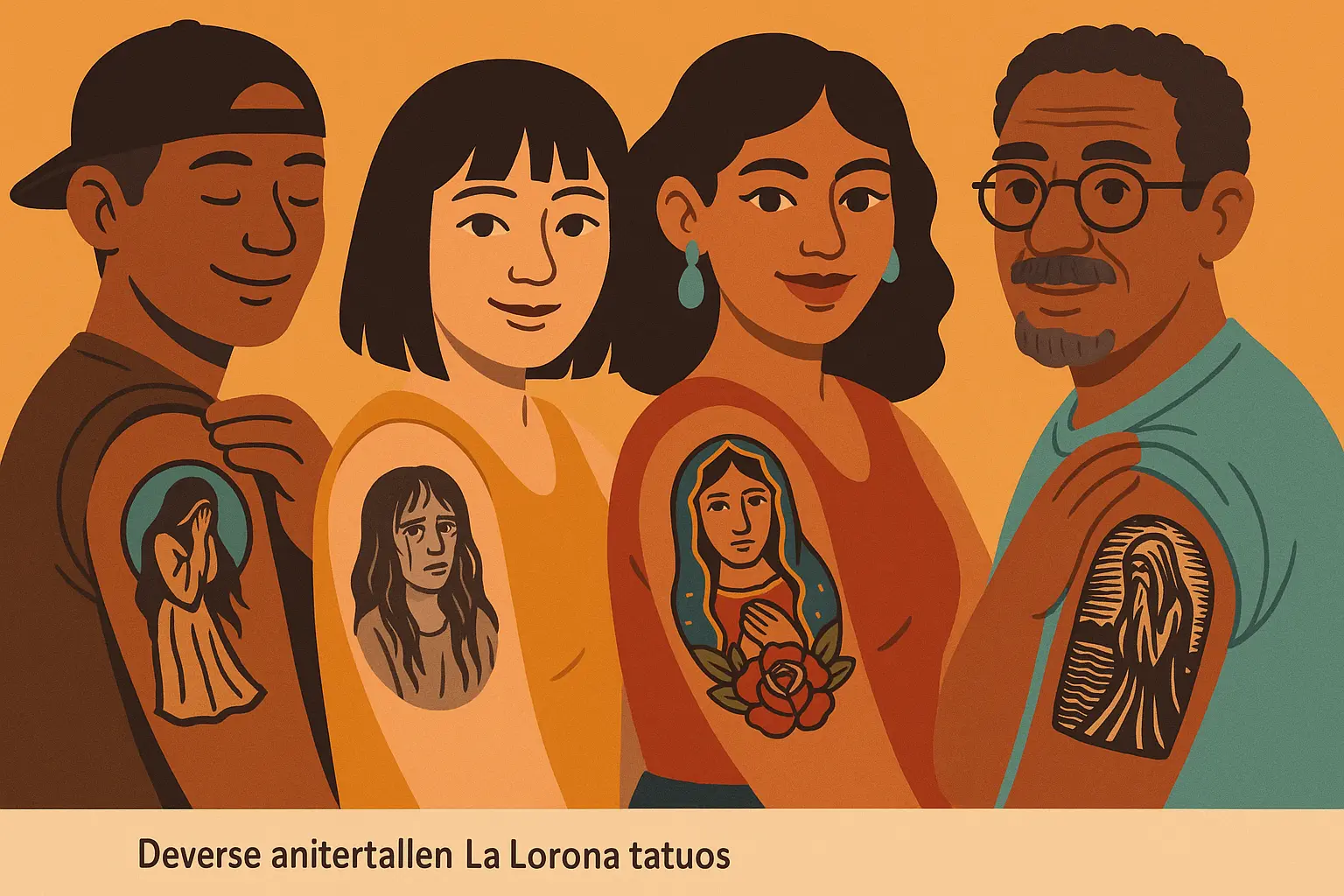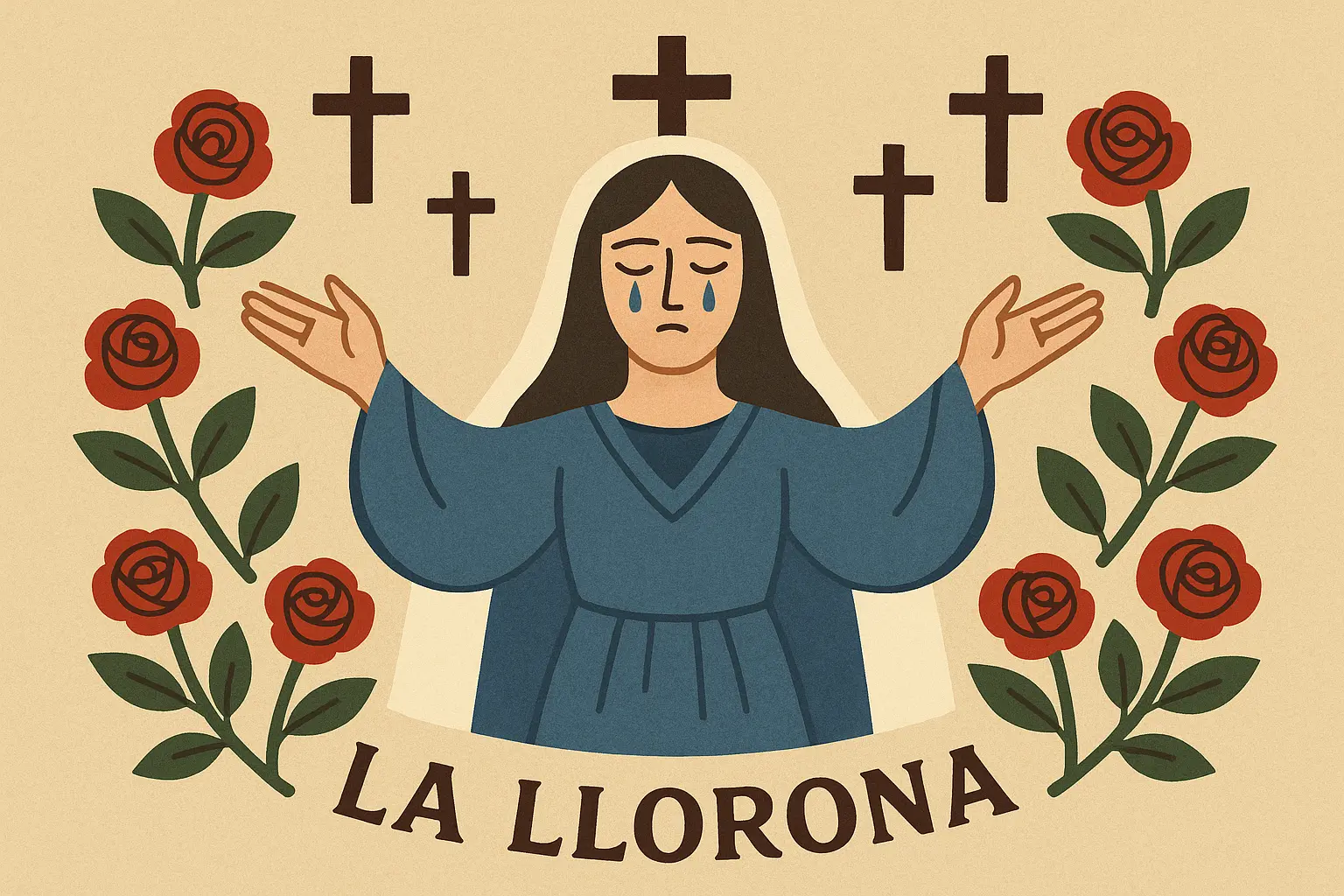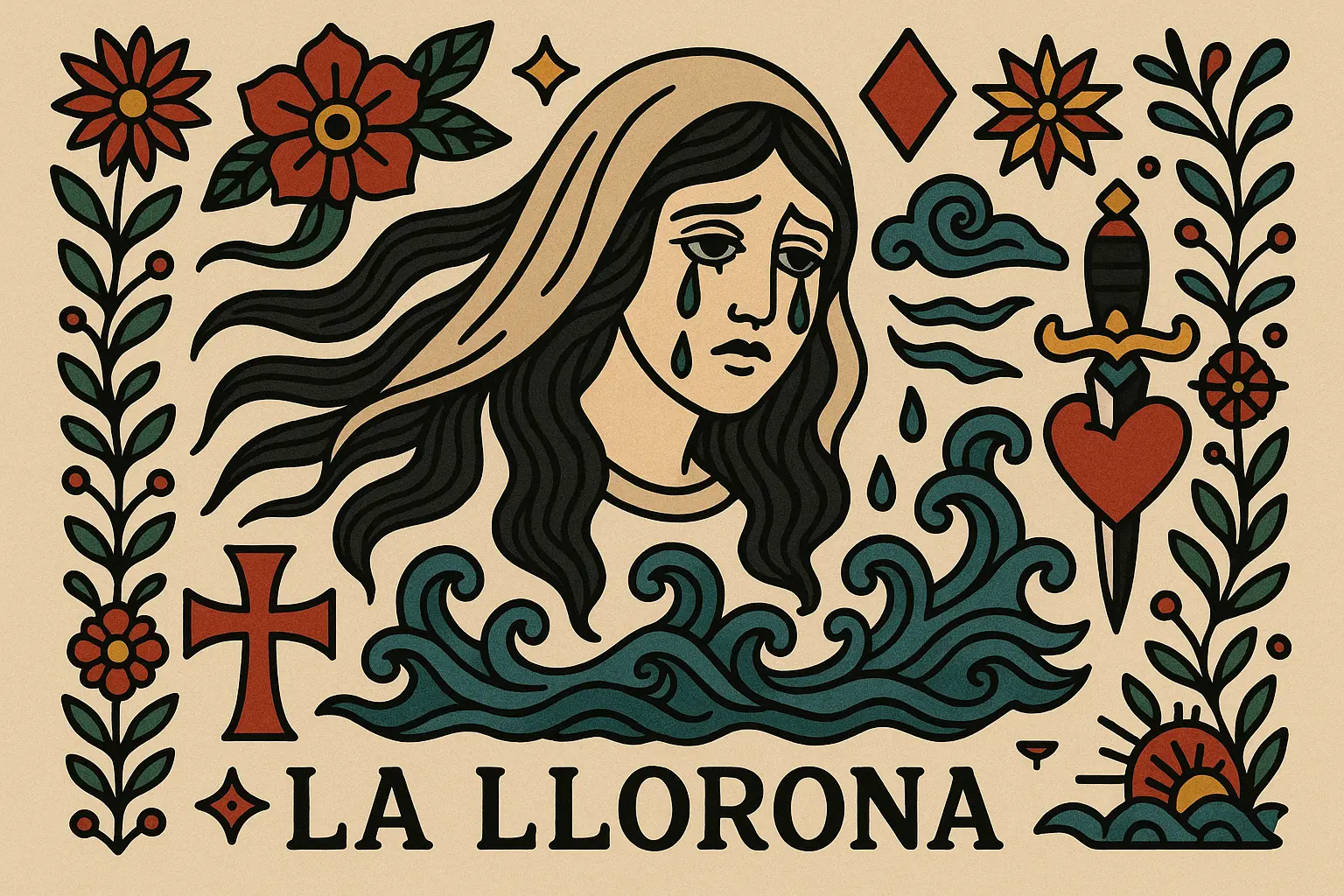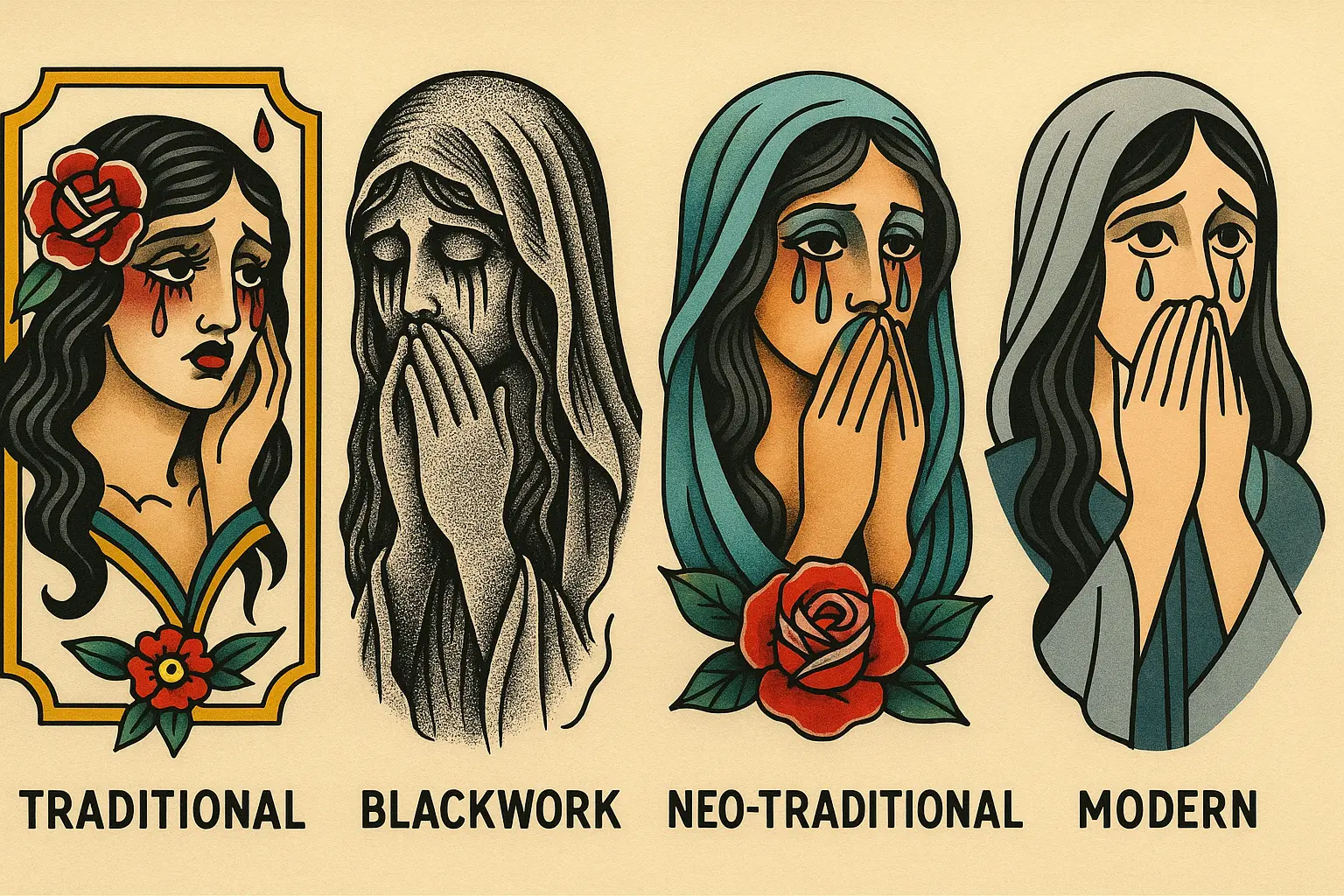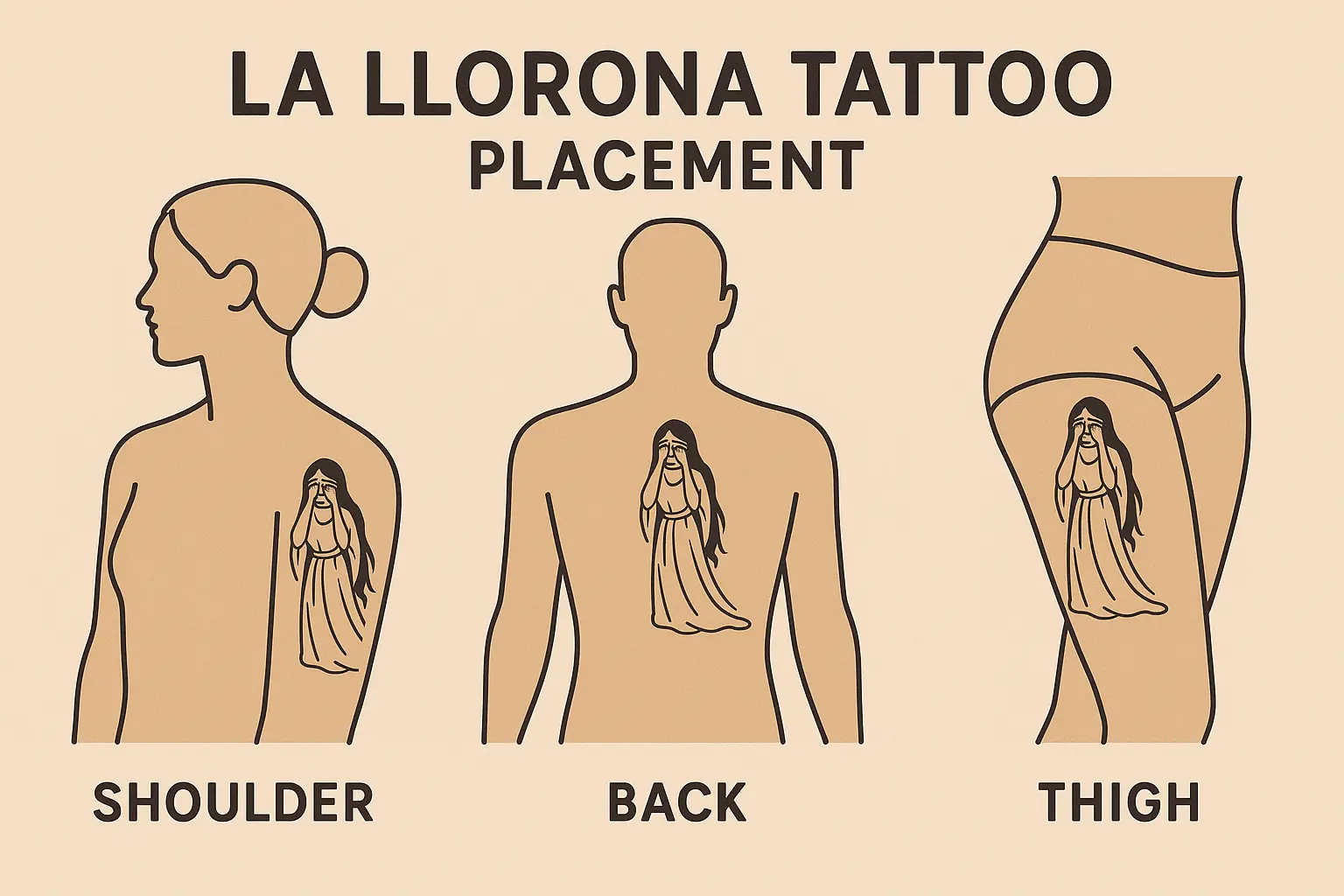La Llorona Tattoo Meaning: Why This Haunting Symbol Captivates Modern Ink Enthusiasts

Picture this: you’re scrolling through Instagram and see a hauntingly beautiful tattoo of a weeping woman in flowing white. Your heart skips a beat, but you’re not sure why. That’s the power of La Llorona – she gets under your skin before you even know her story.
La Llorona tattoos have captured the imagination of ink enthusiasts worldwide, with tattoo sessions typically requiring 4-10 hours depending on detail and size, often requiring multiple sessions for full color and intricate details. This haunting figure from Latin American folklore represents far more than a simple ghost story – she embodies profound themes of maternal grief, cultural identity, and spiritual protection that resonate deeply with modern tattoo collectors.
Table of Contents
-
The Ancient Roots That Still Shape Today’s Tattoos
-
What Your La Llorona Tattoo Really Says About You
-
Getting Your Design Right
-
Why La Llorona Matters Today
-
Where to Put Your Tattoo
-
Final Thoughts
TL;DR
-
La Llorona tattoos blend pre-Columbian water goddess mythology with Spanish colonial influences, creating rich symbolic depth
-
These tattoos primarily represent maternal grief, protection, cultural identity, and spiritual guardianship rather than just scary folklore
-
Design elements like flowing hair, tears, and water imagery carry specific meanings that enhance the overall symbolism
-
Contemporary interpretations include feminist empowerment, mental health awareness, and cultural reclamation
-
Placement significantly affects both visual impact and personal meaning, from large back pieces to intimate side placements
-
Understanding cultural context ensures respectful representation while allows for personal interpretation
The Ancient Roots That Still Shape Today’s Tattoos
Here’s what blew my mind when I first learned about La Llorona tattoos: they’re not just about some scary ghost story your abuela told you. This imagery connects to thousands of years of spiritual tradition that runs so deep, it shaped entire civilizations.
The legend combines ancient Mesoamerican water deities with Spanish colonial narratives, creating a complex symbol that transcends simple ghost stories to represent profound themes of motherhood, loss, and spiritual warning. When you get this tattoo, you’re connecting to something way bigger than most people realize.
How Pre-Columbian Goddesses Created the Foundation
Before Spanish colonization, indigenous Mesoamerican cultures worshipped water deities and goddesses who embodied both creation and destruction. These weren’t just pretty stories – they were the spiritual backbone of entire civilizations.
The spiritual significance of these ancient deities parallels other spiritual tattoo ideas that connect modern ink enthusiasts to deeper meanings beyond surface aesthetics. What’s incredible is how these ancient beliefs still influence modern tattoo choices.
The Aztec Connection You Probably Didn’t Know About
Archaeological evidence links La Llorona to Cihuacoatl, the Aztec “woman serpent” goddess associated with childbirth and war. This divine figure would appear weeping for her children, establishing the core imagery that influences modern tattoo interpretations.
But here’s the thing – Cihuacoatl wasn’t evil. She was a protective mother figure whose tears represented divine sorrow for humanity’s suffering. This completely changes how you should think about your tattoo design.
A modern tattoo artist might incorporate Aztec calendar elements or serpent imagery around a traditional La Llorona figure, creating a piece that honors both the ancient goddess Cihuacoatl and the colonial-era legend. The result? A design that tells the complete historical story on your skin.
Why Water Spirits Matter in Your Design
Indigenous cultures viewed bodies of water as sacred communication points between the living and dead. This belief system directly influences why authentic designs often incorporate flowing water elements – it’s not just decoration, it’s the actual medium through which spirits communicated with the living world.
Water wasn’t just scenery in these ancient beliefs. That’s why you’ll see so many authentic designs featuring rivers, streams, or abstract water patterns flowing around the figure. It represents emotional cleansing and the boundary between worlds.
When Spanish Colonization Changed Everything
Spanish colonization transformed indigenous water goddess myths by blending them with European folklore about mourning women and vengeful spirits. This cultural fusion created the modern La Llorona narrative we know today – part ancient goddess, part colonial cautionary tale.
Catholic missionaries adapted rather than erased indigenous beliefs, transforming La Llorona into a cautionary tale about sin and redemption. This religious mixing incorporated Christian concepts of guilt and penance while maintaining indigenous connections to water and maternal spirits.
The result? A symbol so complex that it can represent completely different things depending on how you interpret it. Your tattoo becomes a personal statement about which version of the story speaks to you.
What Your La Llorona Tattoo Really Says About You
La Llorona tattoos carry multiple symbolic layers that vary based on personal interpretation, cultural background, and artistic representation. These meanings range from maternal grief and protection to cultural identity and spiritual guardianship.
I’ve noticed that people choose these designs for incredibly personal reasons. The beauty of this imagery is how it can represent both individual pain and collective cultural memory. Your tattoo becomes a bridge between your personal story and centuries of shared human experience.
Making Grief Permanent
The most fundamental symbolism relates to maternal grief and the profound pain of losing children. Many people choose this imagery to commemorate lost pregnancies, deceased children, or express complex emotions surrounding difficult parenting experiences.
These memorial designs often share common elements with other meaningful tattoo ideas that serve as permanent tributes to lost loved ones. What strikes me most is how this ancient figure gives people permission to express grief that society often expects them to hide.
Your Pain, Made Visible
Memorial La Llorona tattoos often incorporate specific elements like children’s names, birth/death dates, or personal symbols that transform the mythological figure into a tribute. The weeping aspect becomes a permanent expression of ongoing grief and love.
Last month, I met Sarah at a tattoo convention. Her La Llorona piece featured the figure cradling a small angel with her daughter’s name flowing through the water elements. When she explained that it honored her pregnancy loss, I finally understood why this imagery resonates so deeply – it makes invisible pain visible.
When Motherhood Gets Real
Some individuals choose La Llorona tattoos to acknowledge struggles with postpartum depression, parenting challenges, or feelings of maternal inadequacy. The imagery validates difficult emotions while providing connection to others who share similar experiences.
This therapeutic aspect aligns with broader mental health tattoo ideas that help individuals process and express difficult emotional experiences through meaningful body art. The tattoo becomes a way to say “I’m struggling, and that’s okay.”
The Protector Hidden in Plain Sight
Here’s where it gets interesting – contrary to her frightening reputation, many tattoo enthusiasts view La Llorona as a protective figure who warns against danger and watches over families. This interpretation transforms her from a malevolent spirit into a guardian presence.
The symbolism shifts completely when you view her through this protective lens. Instead of a vengeful ghost, she becomes a fierce mother who will do anything to keep children safe.
Guardian Angels Don’t Always Have Wings
Protective La Llorona tattoos often feature her with outstretched arms, flowing robes, or surrounded by protective symbols like crosses, roses, or prayer hands. These elements emphasize her role as a spiritual guardian, showing how artistic choices can completely shift symbolic meaning from threatening to protective.
In this protective interpretation, the design often includes children playing safely in the background or birds flying peacefully around her figure, completely changing the emotional impact.
Carrying Your Culture on Your Skin
For many people of Latin American descent, La Llorona tattoos serve as powerful expressions of cultural identity and connection to ancestral traditions. These tattoos celebrate heritage while acknowledging the complex emotions embedded in cultural mythology.
The tattoo becomes a way to carry your culture with you wherever you go. I’ve seen people tear up when they see their completed tattoo because it connects them so deeply to their roots.
Staying Connected When You’re Far From Home
Latino individuals in diaspora communities often choose La Llorona tattoos to maintain connection to cultural roots. The imagery serves as a permanent reminder of shared stories, values, and spiritual beliefs that transcend geographic boundaries.
For someone living far from their birthplace, it means never losing touch with the stories that shaped their childhood, the warnings their grandmothers whispered, and the cultural wisdom passed down through generations.
Keeping Stories Alive Through Ink
La Llorona tattoos represent the continuation of oral traditions and cultural storytelling across generations. By wearing this imagery, individuals become living carriers of cultural memory, ensuring important narratives survive in modern contexts.
Look, I get it – you fell in love with this imagery, but you’re worried about crossing lines. Here’s the thing: respect comes from understanding, not avoidance. Research the legend’s origins in your specific cultural background. Understand multiple interpretations beyond the basic ghost story. Work with artists familiar with Latin American cultural imagery. Consider the tattoo’s meaning within your personal heritage, and avoid appropriating sacred or deeply personal cultural elements.
Your role becomes that of a cultural storyteller, carrying these ancient narratives into the future.
Getting Your Design Right
La Llorona tattoos offer tremendous artistic versatility, from traditional folk art styles to contemporary realistic portraits. Understanding common design elements helps create meaningful, culturally respectful artwork that honors the symbol’s deep significance while allowing for personal expression.
I’ve seen incredible variations over the years, and what always impresses me is how small design choices can completely change the tattoo’s emotional impact. The difference between a scary ghost and a protective mother often comes down to subtle artistic decisions.
The Traditional Elements That Define Authenticity
Traditional La Llorona tattoos incorporate specific visual components that immediately identify the figure while maintaining cultural authenticity. These elements have been refined through generations of artistic interpretation and carry deep symbolic meaning.
Getting the symbolism right requires understanding these traditional elements. They’re not just decorative choices – each component tells part of the story and connects to centuries of cultural meaning.
Hair and Fabric That Tells a Story
Long, flowing hair or veils represent La Llorona’s ethereal nature and connection to wind and water elements. In tattoo art, these flowing elements create dynamic movement and establish the supernatural quality of the figure.
The way an artist renders the flowing hair can make or break the entire design. I’ve seen tattoos where the hair seems to move with its own life force, creating an almost hypnotic effect that draws viewers into the mythology.
Getting the Tears Right
The distinctive crying aspect requires careful artistic attention to capture authentic emotional expression. Your artist better understand that those tears aren’t just decoration – they’re the whole point.
A skilled artist knows that the tears need to look like they’re flowing from genuine sorrow, not just decorative water drops. The emotional authenticity of the tears often determines whether the tattoo feels powerful or superficial.
Water Elements That Complete the Picture
Water imagery appears through background rivers, flowing streams, or abstract water patterns. These elements reinforce her connection to drowning mythology while adding visual depth and symbolic meaning.
Without water elements, the design loses a crucial part of its mythological foundation. The water connects her to the ancient beliefs about spirits dwelling near rivers and lakes.
How Modern Artists Are Reimagining the Legend
Contemporary tattoo artists have developed innovative approaches that respect traditional symbolism while incorporating modern artistic techniques and personal interpretation. These approaches allow for creative expression while maintaining cultural authenticity.
Modern interpretations blow me away with their creativity. Artists are finding ways to honor the traditional imagery while making it speak to contemporary experiences and artistic sensibilities.
Photorealistic Portraits That Capture Raw Emotion
Contemporary realistic tattoos create stunning La Llorona portraits with incredible emotional detail and human-like features. These designs focus on facial expression and use advanced shading techniques to create three-dimensional depth.
The photorealistic style can be absolutely breathtaking when executed properly. I’ve seen pieces that look so lifelike you expect the figure to blink or shed another tear.
Understanding tattoo pricing factors helps clients budget appropriately for these complex artistic interpretations that require skilled execution.
Neo-Traditional Fusion That Honors Both Worlds
Neo-traditional La Llorona tattoos combine bold traditional tattoo lines with contemporary color palettes and design elements. This style allows for creative interpretation while maintaining the strong visual impact associated with traditional tattoo art.
The meaning remains consistent across different styles, but the emotional impact can vary dramatically based on artistic approach.
When Less Really Is More
Minimalist La Llorona tattoos focus on essential symbolic elements like a single tear, flowing hair silhouette, or abstract water patterns. These designs appeal to individuals who want cultural connection without large, detailed artwork.
A minimalist approach might feature just the silhouette of flowing hair with a single teardrop, placed behind the ear. It creates a subtle yet meaningful tribute that can be easily concealed for professional settings while maintaining deep personal significance.
Sometimes the power comes through more strongly in simple designs that focus on one or two key elements rather than trying to include every traditional component.
Why La Llorona Matters Today
The digital age has transformed how La Llorona imagery spreads and evolves, with social media showcasing diverse interpretations that honor traditional meanings while creating new symbolic associations. Contemporary tattoo culture embraces this figure as a symbol of female empower ment, mental health awareness, and cultural reclamation.
Social media has completely changed how we see and interpret these designs. Instagram and TikTok are flooded with fresh takes that would have shocked our grandparents, but somehow still capture the essence of what makes this figure so compelling.
Reclaiming the Narrative for Women
Modern feminist interpretations reframe La Llorona from a cautionary tale about women’s weakness into a powerful symbol of maternal rage and justified anger. This perspective views her eternal searching as relentless determination and refusal to accept injustice.
Women are getting designs that flip the script entirely. Instead of a woman punished for her actions, she becomes a fierce advocate who refuses to give up. This reframing resonates with mothers who feel the system has failed them and their children.
Maternal Rage as Righteous Power
Contemporary tattoo interpretations often portray La Llorona as an avenging mother figure representing fierce protective instincts that drive women to extraordinary lengths for their children. This symbolism resonates with mothers who feel society has failed to protect their families.
In this context, the symbolism becomes about channeling anger into action. I’ve met women who chose this imagery after fighting school systems, medical establishments, or legal systems to protect their kids. Their tattoos represent victories hard-won through maternal determination.
Mental Health Conversations Through Ancient Symbols
Mental health advocates have adopted La Llorona tattoos as symbols for depression, postpartum mental health struggles, and emotional healing journeys. The crying figure becomes representation of acknowledging pain while continuing to search for peace and resolution.
For someone battling depression, this tattoo means their pain is valid, their tears are sacred, and their struggle connects them to something larger than their individual experience. The ancient figure gives modern suffering a mythological framework that feels both personal and universal.
Making Emotional Pain Visible and Valid
These tattoos help normalize expression of deep emotional pain, particularly for individuals from cultures where showing vulnerability might be discouraged. La Llorona becomes cultural permission for emotional authenticity.
The tattoo serves as a conversation starter about mental health in communities where these discussions traditionally stayed private. Wearing this imagery publicly says “I’m not ashamed of my pain, and neither should you be.”
Marking Your Healing Journey
Some individuals choose La Llorona tattoos to mark significant points in their mental health journey, using the imagery to represent both darkness they’ve experienced and commitment to continued healing and growth. The tattoo becomes a milestone marker of personal transformation.
If you’re considering this tattoo for mental health reasons, make sure you’re in a stable place before getting tattooed. Discuss the emotional significance with your therapist if you have one. Choose imagery that represents hope and healing, not just pain. Consider how the tattoo might affect you during difficult periods, plan for proper aftercare during emotionally challenging times, and connect with support systems who understand your tattoo’s meaning.
In recovery contexts, this represents the journey from despair toward hope, acknowledging that healing isn’t linear and that setbacks don’t erase progress.
Where to Put Your Tattoo
Tattoo placement significantly impacts both visual impact and symbolic meaning of La Llorona designs. Different body locations offer unique opportunities for artistic expression while considering factors like visibility, pain tolerance, and personal significance.
Placement decisions require careful thought about both practical and symbolic considerations. Where you put this powerful imagery affects how others perceive it and how you experience it daily. The tattoo takes on different meanings depending on whether it’s prominently displayed or kept private.
Going Big for Maximum Drama
Large canvas areas like the back, chest, or full sleeves allow for comprehensive La Llorona scenes that can include environmental elements, multiple figures, or intricate detail work that tells complete visual stories with maximum emotional impact.
Understanding tattoo pain levels helps clients prepare for larger pieces that require multiple sessions and extended time in potentially uncomfortable positions.
Big pieces command attention and respect. When someone commits to a full back piece or chest panel, they’re making a statement about the importance of this imagery in their life story.
Back Pieces That Tell Epic Stories
Back pieces offer the largest canvas for La Llorona tattoos, allowing artists to create sweeping compositions that might include riverbanks, weeping willows, floating children, or cosmic elements that enhance the mythological atmosphere and create immersive visual narratives.
The meaning expands when you have space to include environmental storytelling. Artists can incorporate entire landscapes that place her in context, showing the river where she searches, the moon that lights her path, or the village she haunts.
Intimate Placements for Personal Meaning
Some individuals prefer placing La Llorona tattoos in more private locations where the imagery serves primarily as personal reminder rather than public statement, emphasizing the intimate nature of grief, loss, or cultural connection over external display.
Private conversations happen when the imagery stays hidden from casual observers. These placements create sacred spaces on the body where personal meaning takes precedence over public interpretation.
Side Placements That Flow With Your Body
Side and ribcage placements work particularly well for flowing La Llorona designs where her hair, dress, or tears can follow natural torso curves, creating dynamic movement that enhances the ethereal quality of the figure while maintaining privacy and personal significance.
Consider your pain tolerance for different body areas. Think about professional visibility requirements. Evaluate how the design will age in that location. Assess whether you want public or private meaningful placement. Consider how clothing will interact with the tattoo. Plan for potential future tattoo additions in surrounding areas.
Final Thoughts
La Llorona tattoos represent far more than spooky folklore – they’re powerful symbols connecting ancient wisdom to modern experiences of grief, protection, and cultural identity. Whether you’re honoring lost loved ones, celebrating your heritage, or marking your personal healing journey, understanding the deep cultural roots and symbolic meanings ensures your tattoo carries authentic significance.
The beauty of La Llorona imagery lies in its ability to transform pain into art, grief into protection, and ancient stories into personal truth. Your tattoo becomes part of an ongoing narrative that spans centuries, connecting you to countless others who’ve found meaning in this enduring figure.
Remember that choosing culturally significant imagery comes with responsibility – take time to understand the symbolism, work with artists who respect the cultural context, and ensure your design honors both traditional meanings and your personal story. When done thoughtfully, a La Llorona tattoo becomes a powerful statement of resilience, remembrance, and connection to something larger than yourself.
What this tattoo ultimately means is carrying forward the stories that shaped us, honoring the pain that connects us, and wearing our cultural heritage with pride and understanding. In 2024, when so much feels disconnected and temporary, choosing to permanently mark your body with this ancient symbol says something profound about your commitment to memory, meaning, and the enduring power of human stories that refuse to die.
